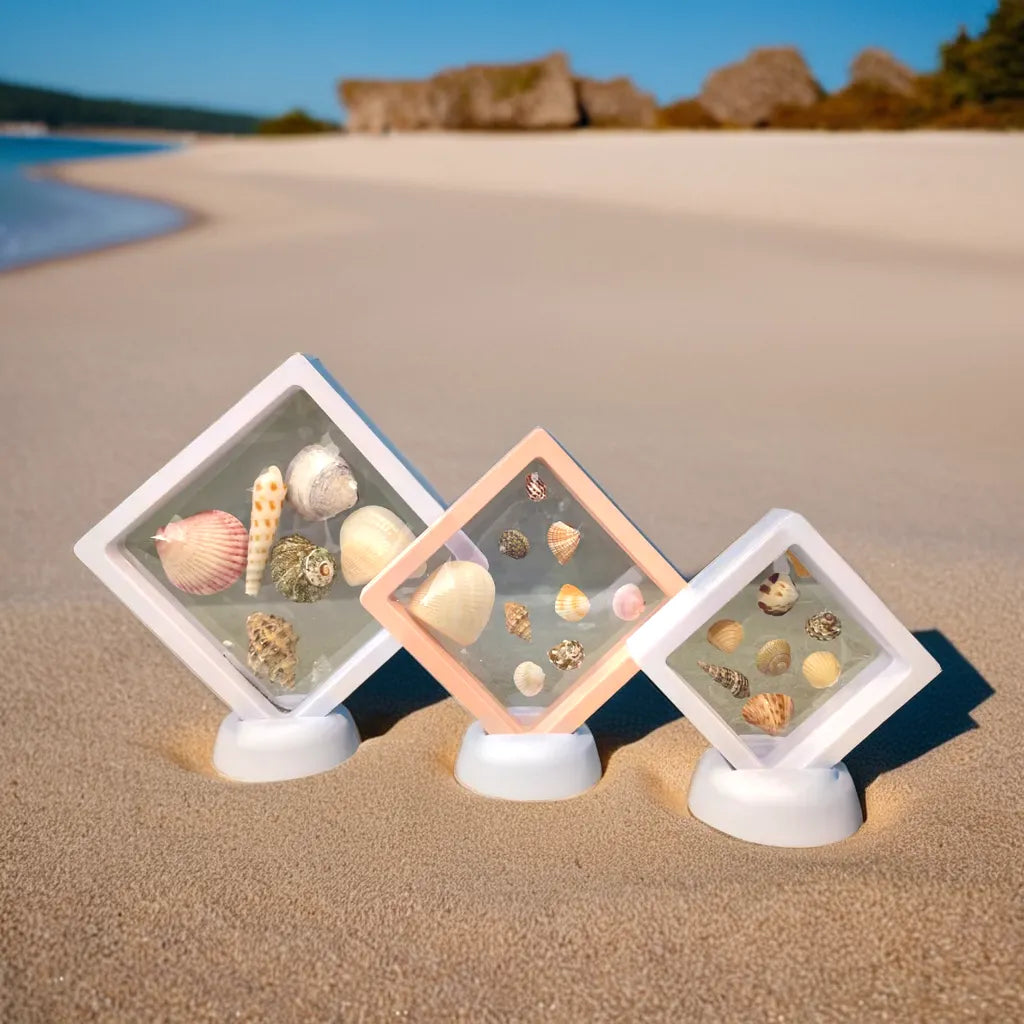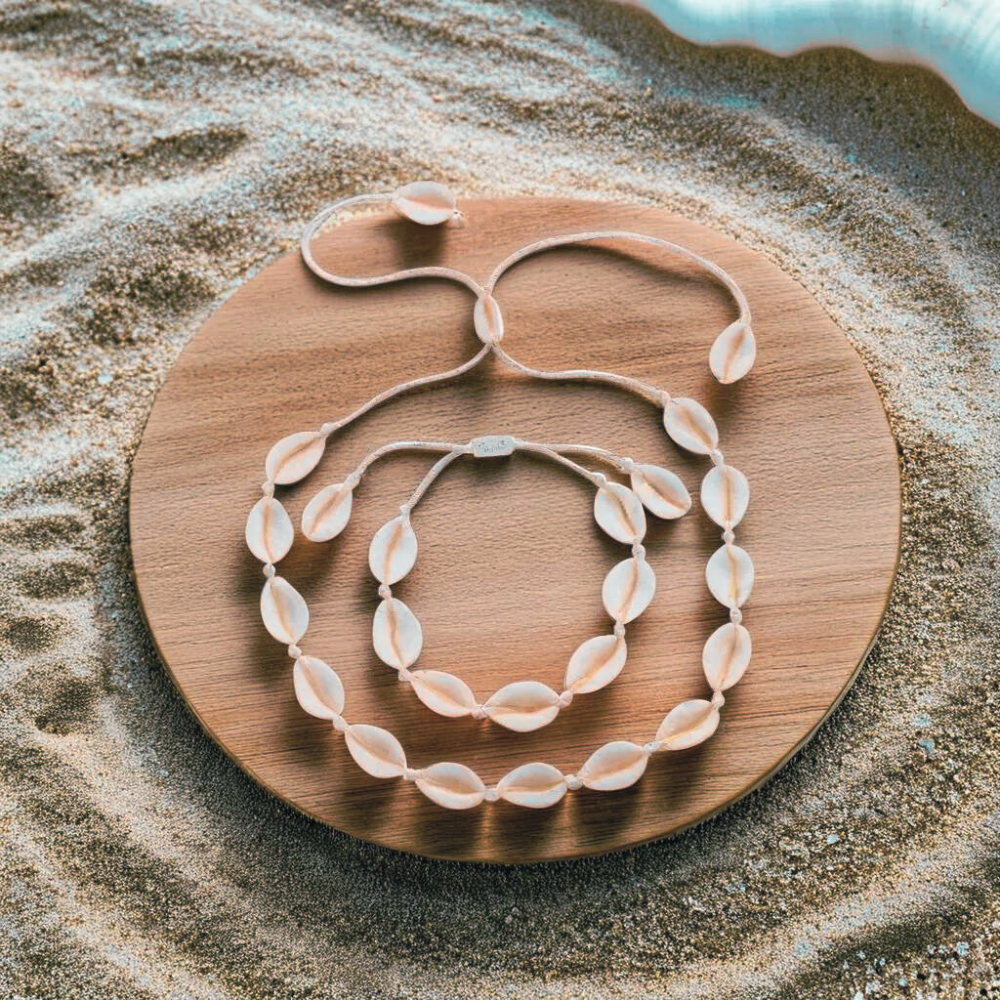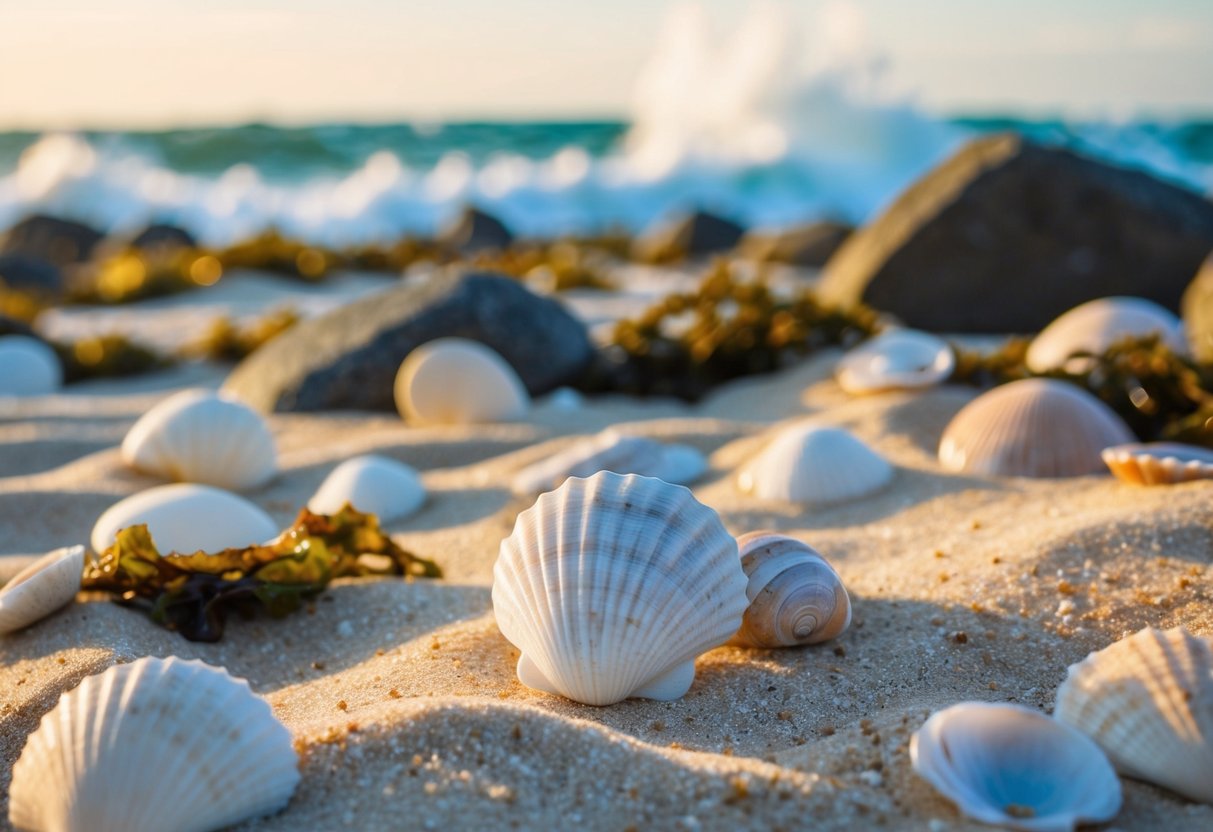The Caribbean is famous for its beautiful beaches and clear waters. Many people visit these islands to relax and enjoy the sun. Some travelers also like to look for seashells on the beaches.
 Certain Caribbean beaches are great spots to find unique and pretty shells. These beaches have the right mix of waves, sand, and sea life to bring in lots of shells. Visitors can often find many types of shells in different colors and shapes. Some beaches even have rare shells that collectors seek out.
Certain Caribbean beaches are great spots to find unique and pretty shells. These beaches have the right mix of waves, sand, and sea life to bring in lots of shells. Visitors can often find many types of shells in different colors and shapes. Some beaches even have rare shells that collectors seek out.
 Certain Caribbean beaches are great spots to find unique and pretty shells. These beaches have the right mix of waves, sand, and sea life to bring in lots of shells. Visitors can often find many types of shells in different colors and shapes. Some beaches even have rare shells that collectors seek out.
Certain Caribbean beaches are great spots to find unique and pretty shells. These beaches have the right mix of waves, sand, and sea life to bring in lots of shells. Visitors can often find many types of shells in different colors and shapes. Some beaches even have rare shells that collectors seek out.
1) Flamenco Beach, Puerto Rico
Flamenco Beach sits on the island of Culebra in Puerto Rico. It's known as one of the top beaches in the world. The beach stretches for about 1.5 miles along the coast. Visitors can find shells on this pristine shoreline. The sand is white and soft, perfect for walking barefoot while searching for treasures. The water at Flamenco Beach is crystal clear. This makes it easy to spot shells in the shallows. Snorkeling is also popular here. The beach offers amenities like lifeguards, showers, and bathrooms. There's even a food truck selling Puerto Rican dishes. Getting to Flamenco Beach takes some effort. It's on a small island off Puerto Rico's main coast. But many think the trip is worth it for the beautiful views and shelling opportunities. For the best shelling experience, visit during shoulder season. This runs from mid-April to June. There are fewer crowds then, making shell hunting easier.2) Seven Mile Beach, Grand Cayman
Seven Mile Beach is a stunning stretch of coastline on Grand Cayman island. It boasts pristine white sand and crystal-clear turquoise waters. The beach spans the western end of Grand Cayman, running from north to south. It begins just north of George Town and extends up the West Bay peninsula. Visitors can enjoy excellent snorkeling and scuba diving opportunities. The beach's waters are home to vibrant marine life. Seven Mile Beach is known for its beauty and has received international recognition. Many consider it one of the best beaches in the Caribbean. The beach offers a range of activities for tourists. Visitors can relax on the sand, swim in the calm waters, or take leisurely walks along the shore. Several hotels and resorts are located near Seven Mile Beach. This makes it easy for guests to access the beach during their stay. Parking areas are available for those arriving by car. Taxis and shuttle buses also provide transportation to the beach from other parts of the island.3) Trunk Bay, St. John
Trunk Bay on St. John is a top beach destination in the U.S. Virgin Islands. It's famous for its white sand and clear turquoise water. The beach stretches for over a quarter mile. It's part of the National Park Service and is well-maintained. Trunk Bay offers great shelling opportunities. Visitors can find various seashells along the shoreline. The beach has an underwater snorkeling trail. This trail provides information about coral formations and sea life. Trunk Bay was ranked as the best beach in the world in 2024. It's a popular spot for tourists and photographers. The beach has basic amenities. There's a snack bar and souvenir shop open from 10 am. Visitors need to pay a $5 admission fee to access Trunk Bay. This fee helps maintain the beach's pristine condition. Getting to Trunk Bay is easy. Ferries run regularly from St. Thomas to St. John. The trip takes about 20 minutes from Red Hook.4) Shoal Bay East, Anguilla
Shoal Bay East in Anguilla is a top spot for shell collectors. This stunning 2-mile stretch of beach offers plenty of opportunities to find unique shells. The pinkish-white sand is made up of tiny crushed shells, giving beachcombers a head start. Visitors can walk along the shoreline and discover a variety of shells washed up by the turquoise waters. The beach is relatively quiet, even during peak seasons. This allows shell hunters to take their time exploring without crowds. Shoal Bay East's crystal-clear water makes it easy to spot shells in the shallows. Snorkeling near the shore can reveal even more hidden treasures beneath the surface. The best times for shelling are early morning or after a storm when new shells have been brought to shore. Beachgoers should respect local rules and only take a few shells as souvenirs. With its beautiful scenery and abundance of shells, Shoal Bay East is a must-visit for Caribbean shell collectors.5) Eagle Beach, Aruba
Eagle Beach in Aruba is a stunning stretch of white sand known for its beauty and tranquility. It's one of the most popular beaches on the island, attracting visitors from around the world. The beach features soft, powdery sand that's perfect for walking barefoot. Its clear, turquoise waters are calm and inviting, making it ideal for swimming and water activities. Eagle Beach is famous for its iconic divi-divi trees. These wind-sculpted trees are a unique sight and provide great photo opportunities for beach-goers. The area offers a mix of low-rise resorts and hotels, giving visitors easy access to the beach. Despite its popularity, Eagle Beach remains relatively quiet and uncrowded. Visitors can enjoy beautiful sunsets from the shore. The beach also provides a nesting ground for sea turtles during certain times of the year. While not primarily known for shelling, Eagle Beach does offer opportunities to find some interesting shells. Early morning is the best time to search for shells along the shoreline.6) Cabbage Beach, Bahamas
Cabbage Beach is a stunning stretch of sand on Paradise Island in the Bahamas. It's known for its soft, powdery sand and clear blue waters. The beach spans about 2 miles along the northern coast of the island. Its wide shoreline provides plenty of space for beachgoers to relax and enjoy the sun. While not primarily known for shelling, Cabbage Beach can offer some opportunities for shell collectors. Visitors might find small seashells scattered along the water's edge, especially after storms. The best time for shelling is early morning before other beachgoers arrive. Walking along the beach, shell hunters may discover various types of shells washed up by the tide. Swimming and sunbathing are popular activities at Cabbage Beach. Water sports like jet skiing and parasailing are also available for those seeking more adventure. Visitors should be aware of strong currents in some areas of the beach. It's important to pay attention to any warning flags or signs about water conditions. Access to Cabbage Beach is free, but amenities like chairs and umbrellas can be rented for a fee. Some parts of the beach are more crowded near resorts, while others are quieter.7) Grace Bay, Turks and Caicos
Grace Bay Beach in Turks and Caicos is one of the top beaches in the Caribbean. It has soft, powdery white sand that feels nice to walk on. The water is warm, clear, and calm, making it great for swimming. The beach stretches for miles along the coast. This gives visitors plenty of space to spread out and enjoy the scenery. Grace Bay is often ranked as one of the best beaches in the world by travel websites. While Grace Bay is known more for its beauty than shelling, beachcombers can still find some treasures. Small shells and pieces of coral sometimes wash up on the shore. Remember that taking shells from protected areas is not allowed. The beach is part of the Princess Alexandra National Park. This means the natural environment is protected. Visitors should be careful not to disturb wildlife or remove anything from the beach. Grace Bay offers stunning views and a peaceful atmosphere. It's a great spot for relaxing, swimming, and enjoying the Caribbean sun. The long stretch of beach also makes it perfect for walks along the shore.8) Pink Sands Beach, Bahamas
Pink Sands Beach is a stunning stretch of coastline on Harbour Island in the Bahamas. It's famous for its soft, pale pink sand that gets its color from tiny organisms called foraminifera. The beach extends for about three miles along the eastern shore of the island. Its width ranges from 50 to 100 feet, providing plenty of space for beachgoers to relax and explore. The water at Pink Sands Beach is crystal clear and calm, making it perfect for swimming and snorkeling. Visitors can often spot colorful fish and other marine life in the shallow waters near the shore. Shelling enthusiasts will find a variety of seashells along the beach. The pink sand creates a unique backdrop for shell collecting, adding to the beach's charm. Several upscale resorts and beach clubs are located near Pink Sands Beach. These offer amenities like loungers, umbrellas, and beachside dining for those looking for a more luxurious experience. The best time to visit Pink Sands Beach is during the dry season, which runs from November to April. During these months, the weather is typically sunny and warm, ideal for beach activities.9) Anse Chastanet, St. Lucia
Anse Chastanet beach in St. Lucia offers a unique shelling experience. This beautiful stretch of sand sits at the base of lush, green mountains, creating a stunning backdrop for beachcombers. The beach is known for its calm waters and peaceful atmosphere. Visitors can find a variety of shells along the shoreline, including colorful sea glass and interesting pebbles. Snorkeling and diving are popular activities at Anse Chastanet. The clear waters allow shell hunters to spot treasures both on the beach and in the shallows. The beach is part of the Anse Chastanet Resort, which provides amenities like beach chairs and water sports equipment. Shellers can take breaks from their searches to enjoy the resort's facilities. Anse Chastanet's location in Soufriere puts it close to other attractions. Visitors can combine their shelling trip with explorations of nearby natural wonders like the Piton mountains. The best time for shelling at Anse Chastanet is early morning when the beach is less crowded. This allows for a peaceful search along the water's edge.10) Palm Beach, Aruba
Palm Beach in Aruba is a popular spot for shell collectors. This two-mile stretch of white sand offers a variety of shells for beachcombers to discover. Visitors can find colorful sea glass pieces along the shoreline. The beach's calm waters make it easy to wade and search for treasures. Common shells found here include conch, sea urchin, and various small bivalves. Early morning is the best time to look for shells before other beachgoers arrive. Palm Beach is lined with resorts, restaurants, and shops. This makes it convenient for shell hunters to take breaks or grab supplies. The beach's western location on the island provides beautiful sunset views. Shelling enthusiasts can combine their hobby with scenic photo opportunities. Remember to respect local regulations about shell collecting. Take only what you need and leave some for others to enjoy.Understanding Shelling in the Caribbean
The Caribbean offers many great beaches for finding seashells. Knowing what shelling means and when to look improves your chances of success.What is Shelling?
Shelling is the hobby of collecting seashells on beaches. People search the sand for shells left behind by sea creatures. Shells come in many shapes, sizes, and colors. Some popular types are conch shells, sand dollars, and scallop shells. Shellers often walk along the water's edge looking for shells washed up by the waves. They may also wade in shallow water or snorkel to find shells underwater. Many collectors focus on finding rare or beautiful shells to add to their collections. Shelling can be a fun, relaxing activity for all ages. It's a great way to explore nature and learn about marine life.Best Times for Shelling
The best time for shelling is usually around low tide. As the water pulls back, it reveals more of the beach and uncovers hidden shells. Check local tide charts to plan your shelling trips. Early morning is often ideal. Fewer people are on the beach, so shells haven't been picked over yet. After storms is another good time, as rough waters churn up shells from the sea floor. Winter can be better for shelling in some areas. Storms are more common, bringing in more shells. There are also fewer tourists, leaving more shells for you to find. Always check local rules about shell collecting. Some beaches limit how many shells you can take.Marine Life Conservation
The Caribbean's beaches and marine ecosystems need protection. Careful actions can help keep these areas healthy for years to come.Importance of Marine Ecosystems
Caribbean marine ecosystems are vital to the region's health and economy. Coral reefs shelter many fish and sea creatures. They also protect coastlines from storms and erosion. Mangroves and seagrass beds are key parts of the ecosystem too. They act as nurseries for young fish and filter water. These areas also store carbon, which helps fight climate change. Healthy marine systems support fishing and tourism jobs. They provide food for local people and visitors. Keeping these ecosystems strong is crucial for both nature and people in the Caribbean.Responsible Shell Collecting
When looking for shells, it's important to follow some basic rules:- Only take empty shells. Leave any with living creatures inside.
- Don't take too many shells from one spot.
- Avoid damaging coral or other sea life while searching.
- Check local rules before collecting. Some areas don't allow shell removal.































